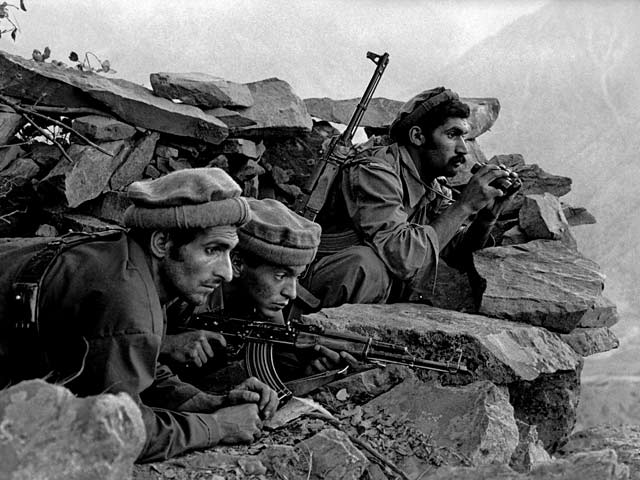
  
  
  
  
  
  
  
  
  
  
  
  
|
 |
27 Dec 1979 - The Soviet Invasion of Afghanistan
1979-89 The Soviet-Afghan War
Late in the Cold War, the Soviet Union invaded Afghanistan in order to ensure that a friendly version of communism would prevail in Kabul, and to prevent radical Islam from spreading next door to the Central Asian Soviet Republics. The vaunted Red Army was outflanked and outfought by Afghan mujahideen for a decade; in the end, Afghanistan defeated one of the world's two superpowers.
A Soviet general staff memorandum later ruefully noted that "The Soviet high command did not study Afghanistan's national-historic facts before committing Soviet forces. If they had, they would have found a history of many centuries of resisting various conquerors. The Afghan considers any foreigner carrying weapons as an alien occupier." The Soviet War in Afghanistan is also known as "the Soviet Vietnam" or the "Bear Trap," and it hastened the fall of the entire Soviet Union.
Afghanistan War, 1978–92, conflict between anti-Communist Muslim Afghan guerrillas (mujahidin) and Afghan government and Soviet forces. The conflict had its origins in the 1978 coup that overthrew Afghan president Sardar Muhammad Daud Khan, who had come to power by ousting the king in 1973. The president was assassinated and a pro-Soviet Communist government under Noor Mohammed Taraki was established. In 1979 another coup, which brought Hafizullah Amin to power, provoked an invasion (Dec., 1979) by Soviet forces and the installation of Babrak Karmal as president.
The Soviet invasion, which sparked Afghan resistance, intially involved an estimated 30,000 troops, a force that ultimately grew to 100,000. The mujahidin were supported by aid from the United States, China, and Saudi Arabia, channeled through Pakistan, and from Iran. Although the USSR had superior weapons and complete air control, the rebels successfully eluded them. The conflict largely settled into a stalemate, with Soviet and government forces controlling the urban areas, and the Afghan guerrillas operating fairly freely in mountainous rural regions. As the war progressed, the rebels improved their organization and tactics and began using imported and captured weapons, including U.S. antiaircraft missiles, to neutralize the technological advantages of the USSR.
In 1986, Karmal resigned and Mohammad Najibullah became head of a collective leadership. In Feb., 1988, President Mikhail Gorbachev announced the withdrawal of USSR troops, which was completed one year later. Soviet citizens had become increasingly discontented with the war, which dragged on without success but with continuing casualties. In the spring of 1992, Najibullah's government collapsed and, after 14 years of rule by the People's Democratic party, Kabul fell to a coalition of mujahidin under the military leadership of Ahmed Shah Massoud.
The war left Afghanistan with severe political, economic, and ecological problems. More than 1 million Afghans died in the war and 5 million became refugees in neighboring countries. In addition, 15,000 Soviet soldiers were killed and 37,000 wounded. Economic production was drastically curtailed, and much of the land laid waste. At the end of the war more than 5 million mines saturated approximately 2% of the country, where they will pose a threat to human and animal life well into the 21st cent. The disparate guerrilla forces that had triumphed proved unable to unite, and Afghanistan became divided into spheres of control. These political divisions set the stage for the rise of the Taliban later in the decade.
(Source: Afghanistan War — Infoplease.com / asianhistory.about.com)
|